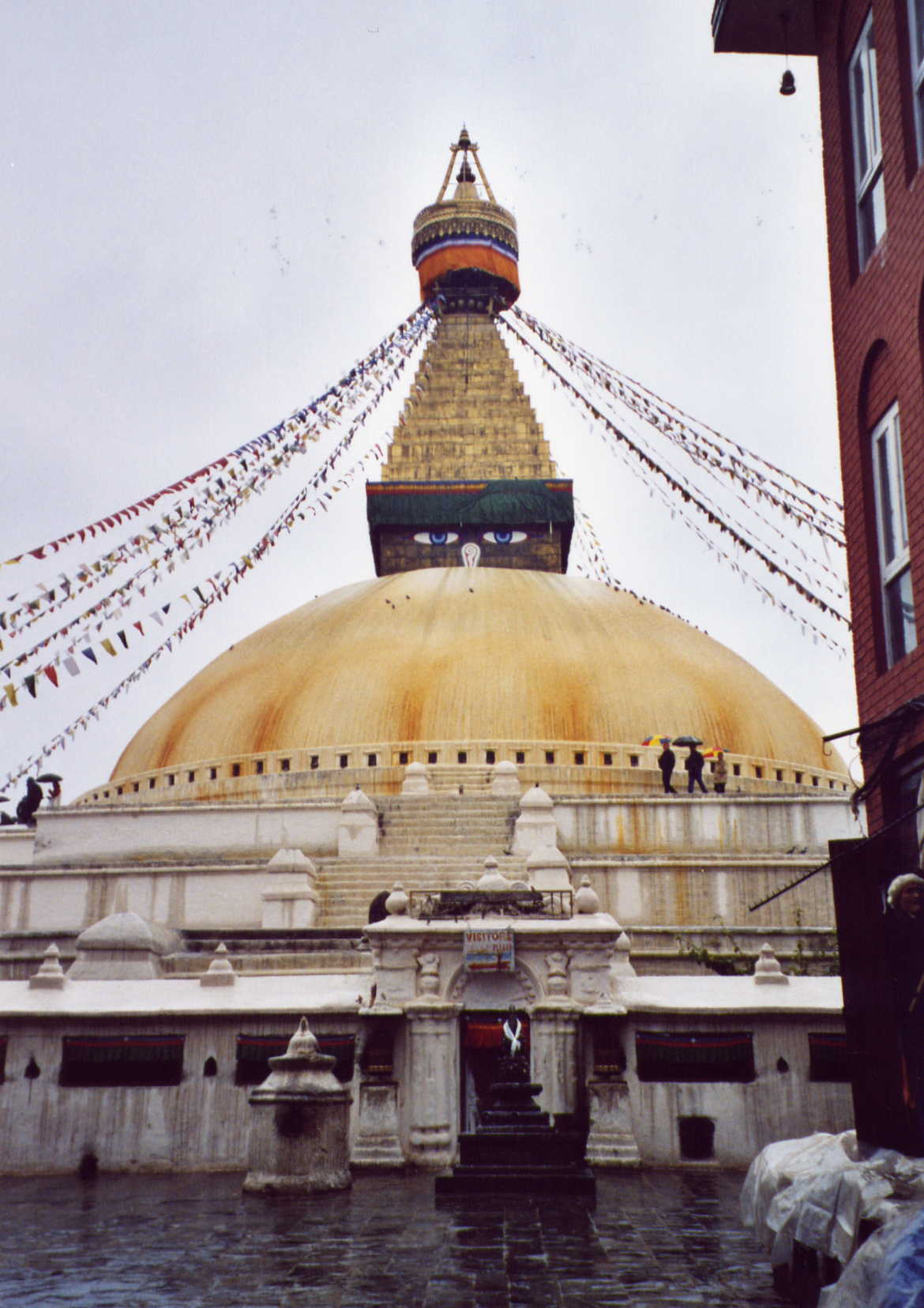
Stupas were originally built to house holy relics, but they have evolved over the centuries to become complex structures that represent the Buddha and Buddhist philosophy. There are a lot of symbolic elements in the stupa. Under the most famous of them are pairs of eyes painted on each side of the square based tower at the top of the stupa. Most people believe that the eyes represents the all-seeing nature of the Buddha. There is a third eye between and above the two normal eyes and the "nose" is not a nose at all but the Nepali number one, which signifies the unity of all life. These Buddhist symbols became almost the national symbols of Nepal and could be seen on plenty of post cards, t-shirts and other souvenirs.
Nepal can be regarded as the cradle of Buddhism. Lumbini, a town in West Terai, is believed to be the birthplace of Siddhartha Gautama - the founder of Buddism, known as the Buddha or the enlightened one. This fact seems to be of little importance for the Buddhists, because Lumbini never became a center of pilgrimage, like Bethlehem or Mecca.
